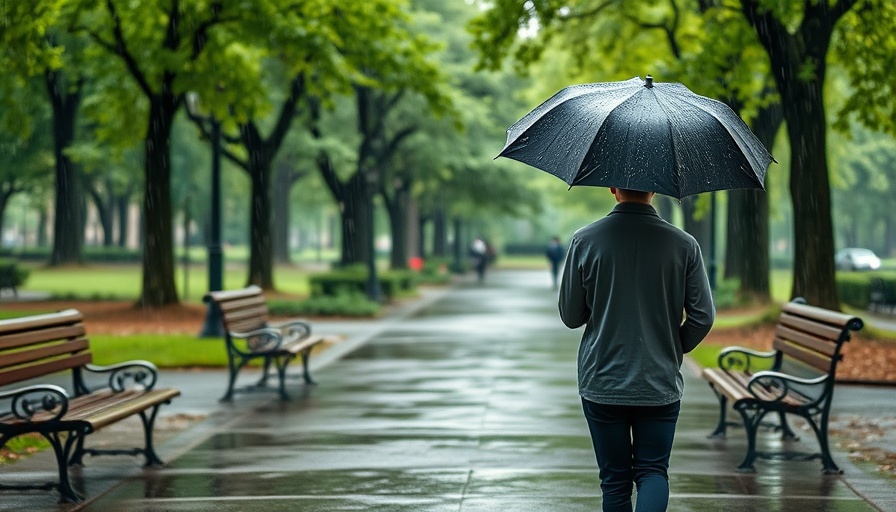
A Glimpse into 1930s New York City’s Urban Landscape
In the thrumming heart of 1930s Manhattan, the Third Avenue Elevated line was more than just a transit system; it was a vibrant artery of urban life. In this vivid framework, artist Bernard Gussow presents a haunting tableau in his painting titled "Third Avenue El." Here, the elevated train roars with life, contrasting against the twilight backdrop of city life, where stories unfold amid the shadows.
The Surreal Presence of the Faceless Men
In Gussow’s artwork, faceless men loom in the shadows, casting an eerie presence over the scene. They are a stark reminder of the anonymity prevalent in bustling metropolises. Workday commuters rush by, their experiences barely acknowledged as evening falls. This imagery stirs feelings of vulnerability, and viewers cannot help but sympathize with the lone woman depicted, startled by the intentions of an unseen stranger.
Art as a Mirror of Society's Anxieties
The haunting aspect of Gussow's painting may indicate deeper societal fears that were prevalent during the 1930s. As economic uncertainty loomed, city dwellers found themselves navigating an increasingly impersonal world. The faceless men may symbolize the quiet dread of living in a city where interaction becomes perfunctory, echoing concerns about identity amidst urban anonymity.
Contrast: Daylife Versus Nightlife
Gussow’s masterful use of color amplifies this tension between day and night, life and passing. The bright storefronts and amber hues underscore a bustling daytime atmosphere, only to be interrupted by the more somber tones of the evening scene—where nightlife has a different rhythm, and the unforeseen vulnerabilities of individuals come to the surface. This duality in the painting reflects the complex nature of urban existence.
What We Learn from the Past
As we reflect on Gussow’s striking portrayal of New York City, we are reminded that the painted façade of a bustling metropolis is often layered with histories of struggle, anonymity, and resilience. The depiction of urban life in the 1930s encourages us to ponder how far we’ve come—and how much remains the same. The anonymity these faceless men represent still exists in our modern cities, challenging our perceptions of safety and connection.
In a world increasingly defined by speed and efficiency, Gussow's work implores us to take a moment to recognize the humanity entwined in our urban landscapes—making it crucial for professionals in fields like law, healthcare, and finance to foster connections that transcend the facelessness of modern life.
 Add Row
Add Row  Add Element
Add Element 



Write A Comment